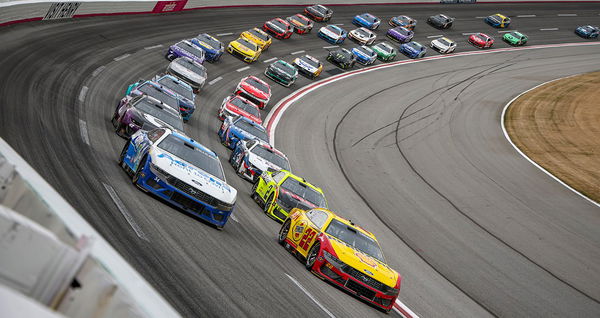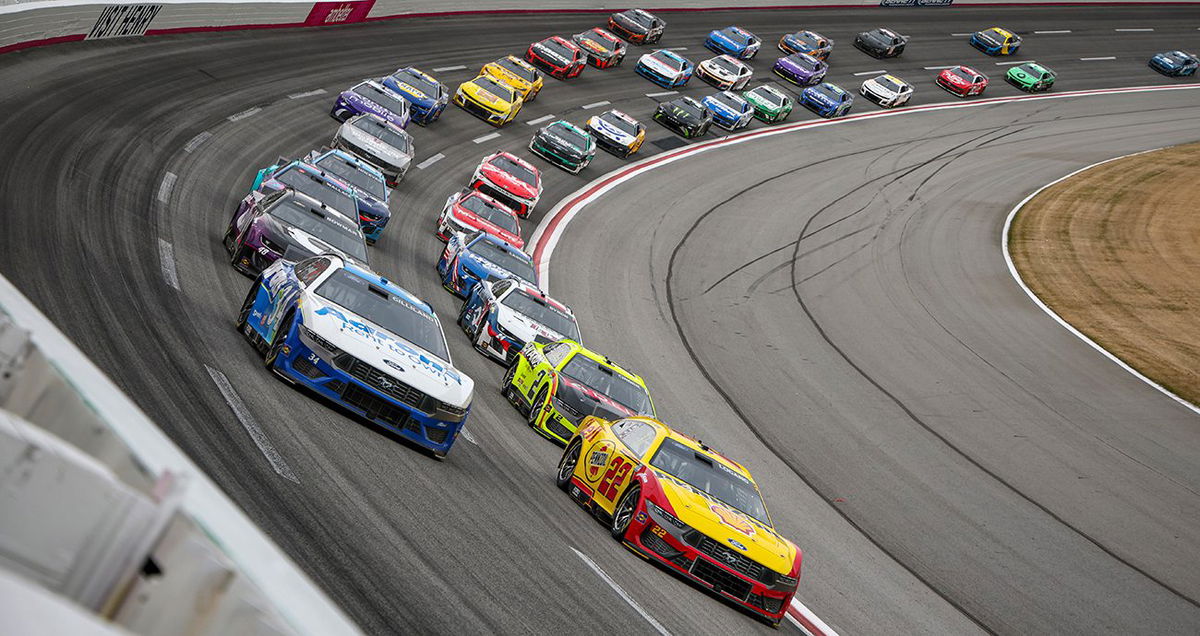

“Our goal was to secure long-term stability with an optimized mix of distribution platforms.” NASCAR President Steve Phelps said these words two years ago, just after the landmark $7.7 billion media rights deal. Although the distribution platforms are still in the mix, the long-term stability may take time to grow wings. That is due to a slew of viewership slumps during the 2025 NASCAR Cup Series season.
Watch What’s Trending Now!
The Cup Series registered an overall 14% decline in viewership across the year. The Championship finale at Phoenix Raceway marked a drop to 2.774 million viewers from 2.9 million, and also a ratings fall from 1.60 to 1.44. This was just one of the pieces of evidence of decline – and yet, NASCAR is looking ahead.
ADVERTISEMENT
No change in NASCAR broadcast schedule
The media rights deal was for a period from 2025 to 2031. With the first year done and dusted, the second year is beckoning with as much energy as 2025. Brian Hebst, NASCAR’s Executive Vice President, said that he would “expect a very similar makeup of broadcast and cable with respect to the playoffs in 2026.” This year marked the arrival of new media giants like Amazon Prime and TNT Sports, alongside FOX and NBC. And it was a unique medley of experiences for fans, ranging from cable TV to streaming options.
Despite evidence of viewership decline, Steve Phelps said that everything went according to plan. The pursuit of a younger audience compelled NASCAR to take a risky deal. And Amazon Prime excelled in that regard – its five-race debut in 2025 saw it lose 16% of the audience from the same races in 2024, but the 18-34 demo was up 55% year-over-year. Herbst added to the benefits: “If you are ordering paper towels or books for your kids on an Amazon Prime app and it’s a NASCAR race on the face of the Amazon Prime app, those are opportunities that we did not have in 2024 and we’re able to bring to bear for the industry in 2025.”
While the broadcast partners will remain the same, different races will grace every platform. Brian Herbst pointed out that it is a balancing act with novel events – like the Clash at the Coliseum for Fox, the first Chicago street race for NBC. In 2026, San Diego will come to Prime Video. “If you have San Diego in June on the Amazon Prime calendar, that’s kind of a cool opportunity for a family vacation, and the base happens to be available,” Herbst said of scheduling.
ADVERTISEMENT
.@NASCAR EVP Brian Herbst says he would “expect a very similar makeup of broadcast and cable with respect to the playoffs in 2026.” – @AustinKarp https://t.co/Mth87iKg12
— Adam Stern (@A_S12) November 11, 2025
Overall, Brian Herbst’s outlook for 2026 looks optimistic. He continued, “When you look at putting together the right media, the right strategy for our sport, or any property, there has to be some sort of a balance of broadcast cable and a streaming pattern to it. So we’re able to achieve that, but there’s also the economic realities of making sure that your financial position for the industry came in where we needed to come in. So we’re able to accomplish that in Year 1 of the deal in 2025 and expect to grow from here.”
ADVERTISEMENT
Like NASCAR’s risky approach, even Formula One is embarking on a dicey alternative from 2026.
Switching partners sparks backlash
Although NASCAR took a gamble on Amazon Prime, the results were pretty impressive. However, Formula One fans are not willing to take a risk with a new media giant. F1 will be leaving ESPN and moving its U.S. broadcast home to Apple TV in 2026. This invited major controversy, as ESPN provided a familiar and accessible platform. For a single subscription, fans can access not only F1 but also college football, UFC, WWE, 30-for-30 documentaries, and other sports content. The Sky Sports simulcast brought U.S. viewers some of the most polished, engaging, and technically insightful broadcasts.
ADVERTISEMENT
So the move to Apple TV is bizarre. Jeff Gluck, who recently demanded a shorter NASCAR schedule, shared his thoughts. “This seems like one of the biggest possible missteps F1 can make right now. They had a chance to continue with ESPN for less money and instead took the bigger payday (with promised Apple promotion) to put every race behind a paywall.” He added, “This is the path to making your sport more niche, not growing it — and F1’s growth has been largely built on the casuals. Maybe this is NASCAR PTSD speaking, but I can’t see how this goes well.”
With both NASCAR and F1 taking risks, motorsports fans may be up for some frenzy. Let’s wait and see how the two sports approach 2026.
ADVERTISEMENT
ADVERTISEMENT
ADVERTISEMENT

